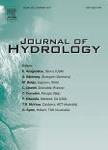版权所有:内蒙古大学图书馆 技术提供:维普资讯• 智图
内蒙古自治区呼和浩特市赛罕区大学西街235号 邮编: 010021

作者机构:Norwegian Univ Life Sci Fac Sci & Technol N-1432 As Norway Rosim AS Brobekkveien 80 N-0582 Oslo Norway
出 版 物:《JOURNAL OF HYDROLOGY》 (水文学杂志)
年 卷 期:2018年第567卷
页 面:792-802页
核心收录:
学科分类:08[工学] 0708[理学-地球物理学] 081501[工学-水文学及水资源] 0815[工学-水利工程] 0814[工学-土木工程]
主 题:Inter Catchment Wastewater Transfer Sewer overflow Long Short-Term Memory Deep learning
摘 要:Sewer overflow is a priority concern for many cities. Owing to the high density of buildings and populations, constructing new storage tanks in urban areas is getting more and more difficult. Therefore, this paper proposes a novel Inter Catchment Wastewater Transfer (ICWT) method for sewer overflow mitigation. The ICWT method aims at redistributing the spatial mismatched sewer flow according to the treatment capacity of Wastewater Treatment Plant (WWTP). Three tasks are involved in the development of ICWT. First, test the effectiveness of ICWT. Second, study how to properly redistribute inflow to the WWTP. Third, the operation of ICWT highly depends on inflow to the WWTP, to support the management of ICWT, it is imperative to construct a flow rate prediction model. A hydraulic model is used for task 1 and 2, individual and combined effects of the storage tank and ICWT on sewer overflow are investigated. The simulation results show that less overflow is obtained. In considering the deficiencies of hydraulic model, one of the most promising deep learning techniques, Long Short-Term Memory (LSTM), is employed to undertake task 3. Experiments demonstrated that LSTM could be of great use in predicting sewer flow. (C) 2017 Elsevier B.V. All rights reserved.